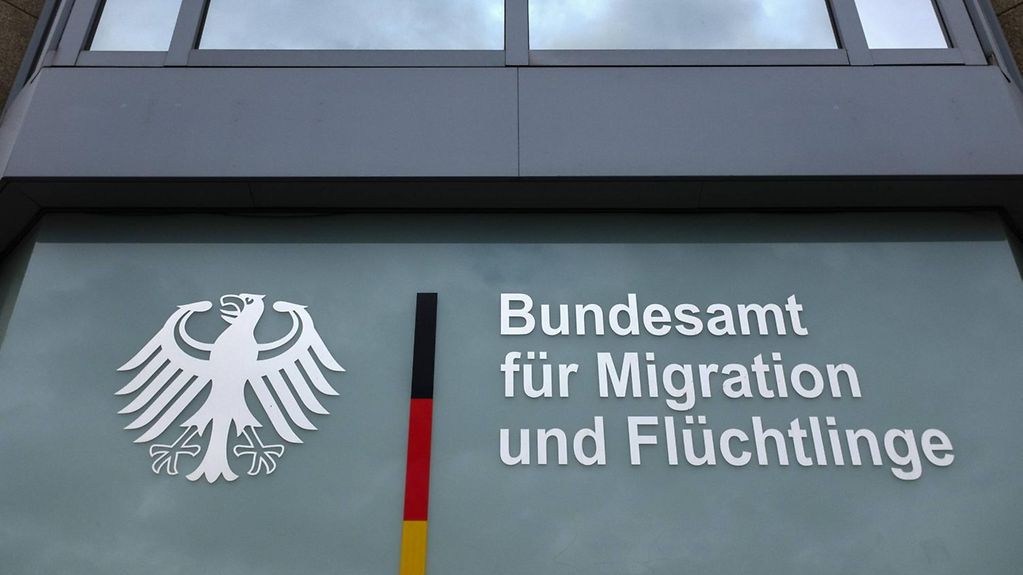Migration Report 2020
The coronavirus pandemic also had an impact on migration in 2020: from March onwards, there was a definite decline in all forms of migration. These and other important findings are summarised in the Migration Report 2020 approved by the Federal Cabinet.
4 min reading time

The Research Centre of the BAMF – Federal Office for Migration and Refugees produces the Federal Government’s Migration Report every year.
Photo: imago images / Lars Reimann
Migration to and from Germany in 2020 was marked by the coronavirus pandemic: there was a decline in all migration from March onwards – not least as a result of restricted international mobility due to the spread of COVID-19.
The new Skilled Workers Immigration Act and Brexit also affected migration. All in all, there were nearly 24 percent fewer immigrants and more than 21 percent fewer emigrants in 2020 as compared to the previous year.
Net immigration still on the decline
There was a continuing decrease in net immigration: the 1,186,702 people immigrating to Germany were offset by 966,451 leaving. This means that by the end of 2020, at least 220,000 more people were living in Germany than at the beginning of the year. This is the fifth year in a row that this number has decreased – in 2016 it was still at almost 500,000. The decline in registered migration occurred mainly in the period from March to December 2020, when global travel restrictions were in place due to the pandemic.
The Federal Government’s Migration Report provides information on migration in Germany based on a wealth of data, giving a comprehensive overview of the year under review. Incoming and outgoing movements across Germany’s borders are presented in detail and set in the context of political and legal developments during the reporting period. See here for the Migration Report 2020.
The focus is on Europe
Inward and outward migration relating to Germany is mainly through European countries. What is more, the Federal Republic is shown to be a particularly attractive destination for EU nationals who wish to study and work here. In 2020, 69 percent of immigrants came from a European country and just under 55 percent from an EU state.
“We often forget that migration in Germany largely involves Europeans moving between European countries,” explained Federal Minister of the Interior Nancy Faeser. She said it was a positive thing that “the Federal Republic of Germany has established itself as an attractive destination in particular for those who wish to study and work here, including EU nationals.”
Europe was also the main destination region for emigrants from Germany: some two-thirds of those leaving Germany moved to another European country in 2020, with at least 55 percent going to another EU state. The highest positive rates of net migration in 2020 were recorded for Romania (+36,824) and Bulgaria (+22,758).
Fewer asylum applications
The number of asylum applications continued to decline, reflecting the ongoing decrease in refugee migration: from 2016 to 2019, the number of first-time applications already dropped by at least 80 percent. This downward trend continued in 2020 as a result of the pandemic: here the number of asylum applicants fell below the 2013 level for the first time, with a total of 102,581 in 2020.
As has been the case since 2014, Syria ranks first among the nationalities with the highest number of asylum applications. In 2020, 36,433 asylum applications were submitted by Syrian nationals – a share of 35.5 percent.
The migration situation in 2020 is explained in an interview with experts from the Federal Office for Migration and Refugees.
Number of first-year students declining
The pandemic also led to a decline in the number of foreign students taking up studies in Germany. Compared to 2019, the number decreased by 22 percent to 86,528 people.
In view of the pandemic and as a result of changes in statistical recording methods due to the new Skilled Workers Immigration Act, the figures on labour migration can only be compared with those of previous years to a limited extent. In 2020, 29,747 people entered Germany who received a residence permit for the purpose of work: this was 53.7 percent less than in 2019. The majority of these immigrants are qualified and highly skilled professionals.
More than 26 percent have a migration background
In 2020, 21.9 million people were living in Germany where the individual themselves or at least one of their parents did not hold German citizenship at birth. This means that 26.7 percent of the population in Germany has a migration background, of which more than half are German citizens.
“Today, Germany is indisputably a country of immigration,” said the Federal Minister of the Interior. The new Federal Government will seek to “establish a new beginning in migration and integration policy that does justice to a modern immigration country”, said Faeser. She noted that the migration report offered “facts and figures that enabled discussions to be held based on objective substance.”